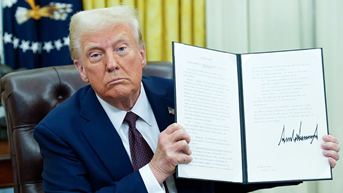After only a few months in office, Trump has sweeping plans for the future of America; here’s how these policies will affect the future of world languages in American public education.
On March 1, President Trump signed an executive order titled “Designating English as the Official Language of The United States,” declaring English to be the single official language.
Additionally the executive order repealed a previous executive order signed in 2000 by then-President Bill Clinton, which mandated federal agencies to accommodate people with Limited English Proficiency (LEP) by providing forms in different languages or offering interpreters to non-English-speaking individuals.
The executive order does not require any immediate changes to services, yet it now gives federal agencies the ability to deny any language accommodations at their discretion.
At the same time, and as part of the ongoing effort by Elon Musk’s Department of Government Efficiency (DOGE), the Trump administration moved to close the Department of Education with this executive order: “Improving Education Outcomes by Empowering Parents, States, and Communities.”
As a result, cuts have been made to a range of programs, including subsidies for low-income schools, civil rights enforcement, student loans, and financial aid. These cuts will have a disproportionate impact on lower-income and marginalized groups, which now include people who do not speak English as their primary language.
The population most impacted — both numerically and in the rhetoric of the current administration — are Spanish speakers.
Megan Dunn, a Spanish teacher at Skyline, spoke out about the removal of services, both in general and in schools.
“By taking away those [accessibility] services, it’s … [only] accessible for certain groups and not for others,” Dunn said.
As a result, Dunn argues that Trump is going as far as to “eras[e] [the culture of] a group which makes up 20 percent of our population.”
In addition, this policy shift may also affect academic subjects the current administration deems problematic—including world languages as a whole. These cuts continue a pattern of previous actions, such as the shutting down of foreign aid programs like USAID, further increasing the divide between the U.S. and the rest of the world.
Dunn worries that by discouraging and suppressing foreign language education, the administration is endangering the future of language programs across the country.
The aid “keeps world language relevant at the national level so we can teach at the state level,” Dunn said.
As such, many argue that these policies are an injustice to everyone who has spent their time, effort, or lives learning or using a language other than English.
It is “a disservice to those who speak Spanish and those who learned Spanish at the state level,” Dunn said.
For more information:
Trump’s vision for dismantling the Department of Education
The White House: Designating English as the Official Language of The United States
What Trump’s cuts to the Department of Education mean for schools and students
Trump has ordered the dismantling of the Education Department









